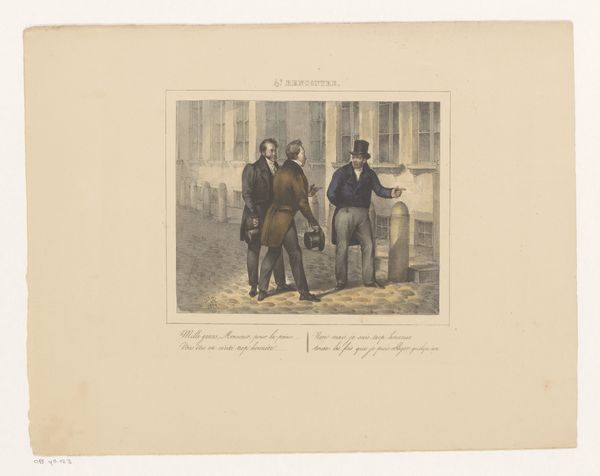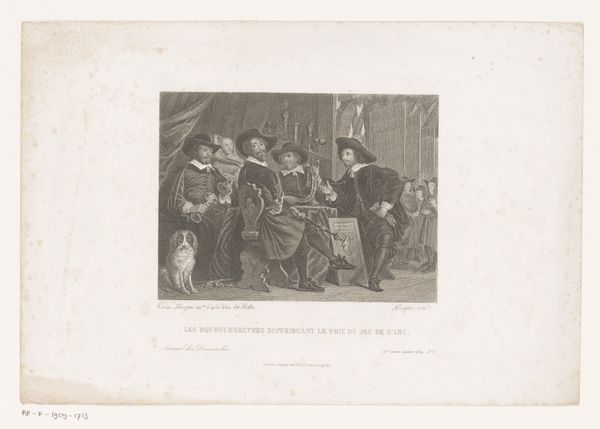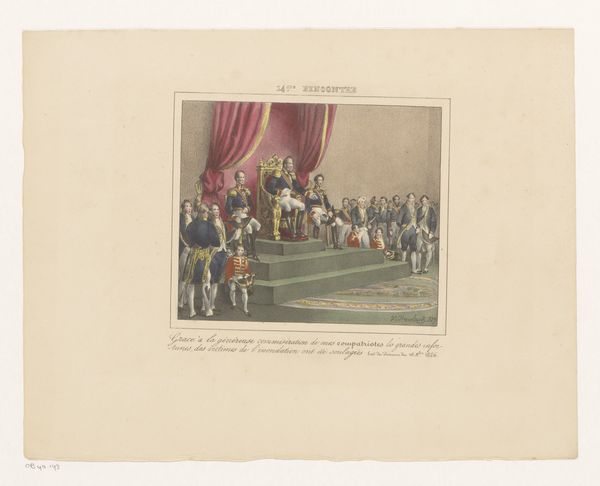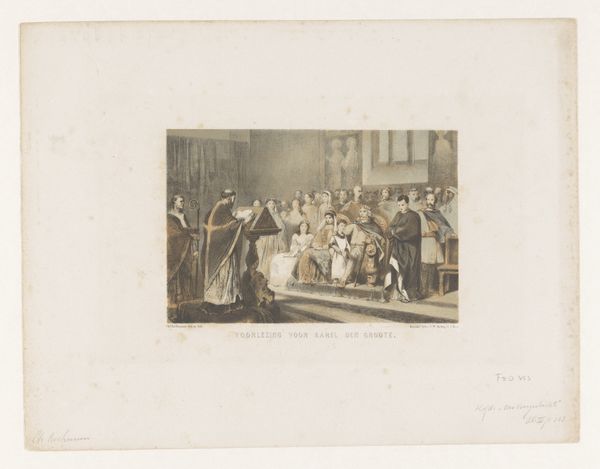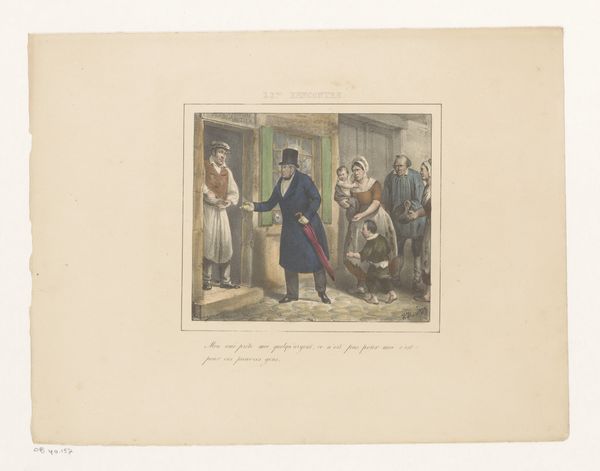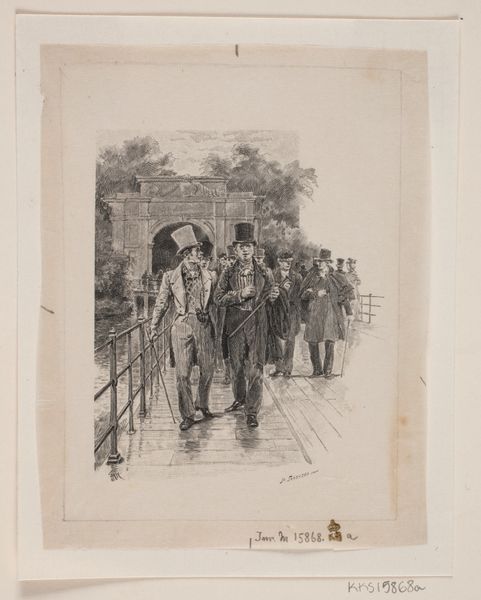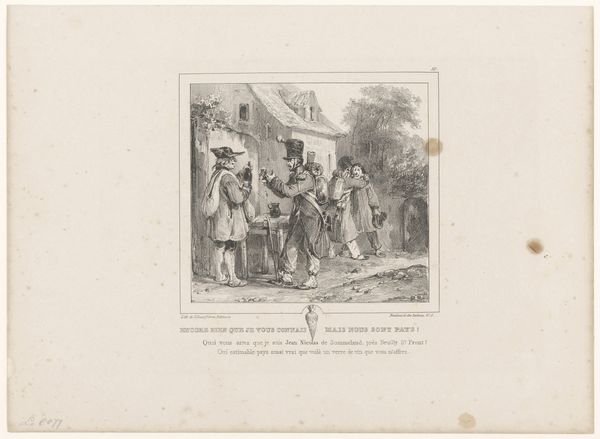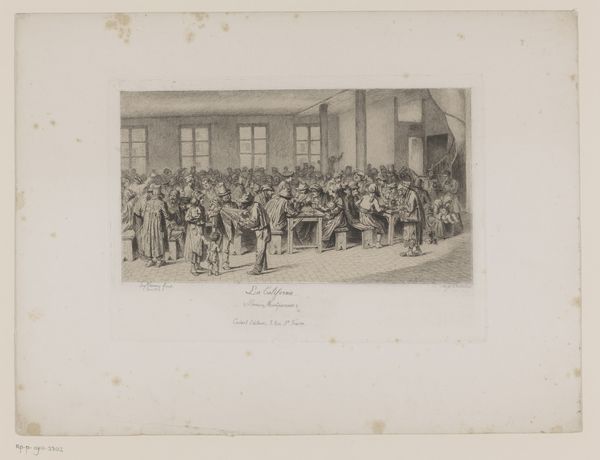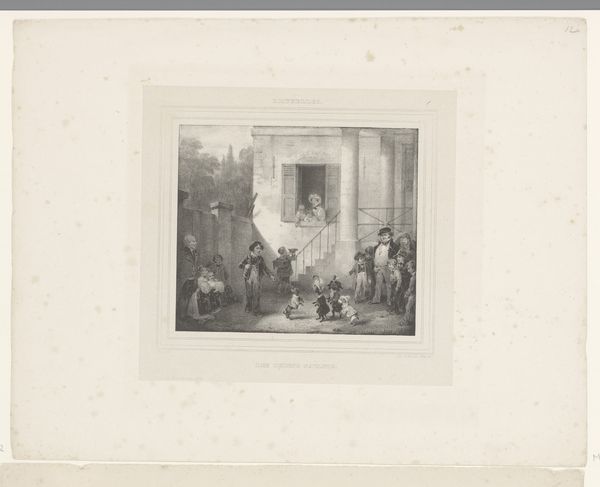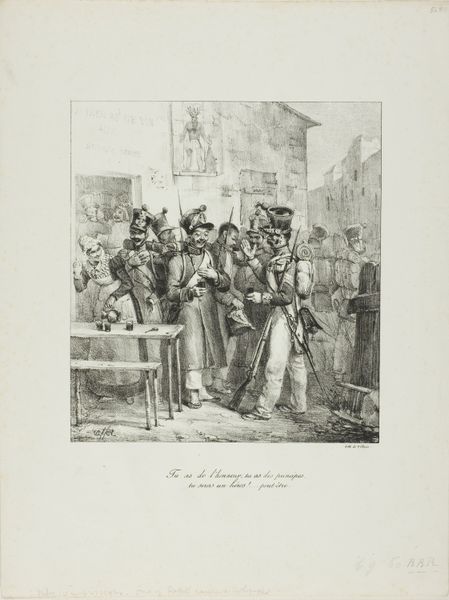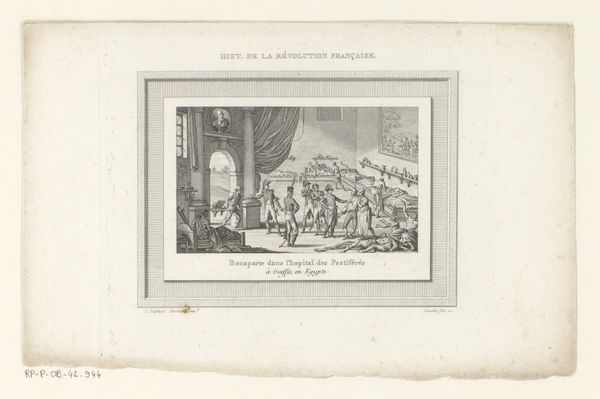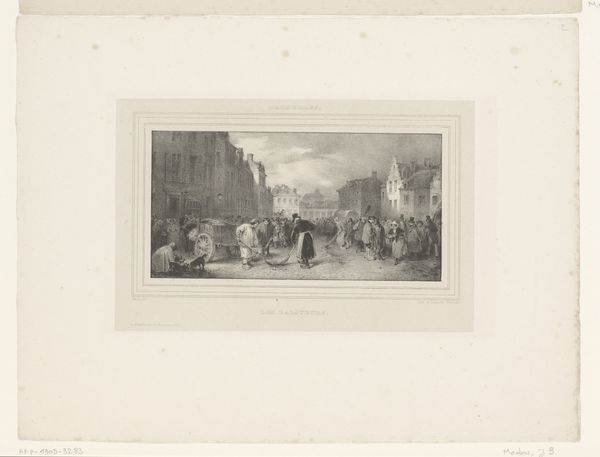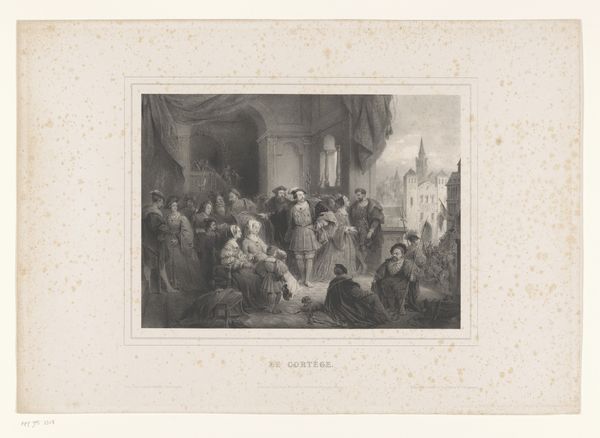
print, etching
#
narrative-art
# print
#
etching
#
figuration
#
romanticism
#
genre-painting
#
history-painting
Dimensions: height 240 mm, width 312 mm
Copyright: Rijks Museum: Open Domain
Jean-Louis Van Hemelryck created this print depicting a chamberlain bringing an invalid before King William I in 1829. It's an intriguing image made through lithography, a relatively new printing technique at the time. The process involves drawing on a flat stone or metal plate with a greasy crayon, then treating the surface so that ink adheres only to the drawn areas. This allows for detailed and subtle tonal variations, evident in the faces and the rendering of textures like fabric and skin. Lithography democratized image production, making it easier to reproduce images for a wider audience. In this case, the choice of lithography highlights the social commentary embedded in the scene. Here, it's not just a historical record, but also a reflection on power dynamics and social hierarchies, made accessible through a relatively accessible medium. The print, therefore, is a product of its time, both in subject matter and method of production, reflecting the shifting landscape of 19th-century society and technology.
Comments
No comments
Be the first to comment and join the conversation on the ultimate creative platform.
